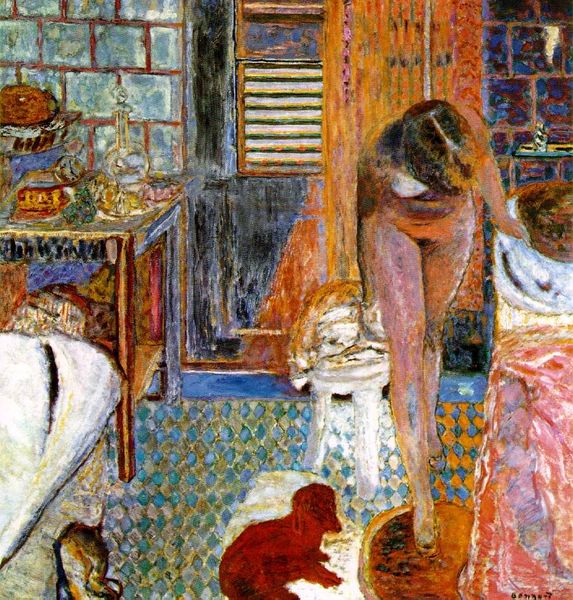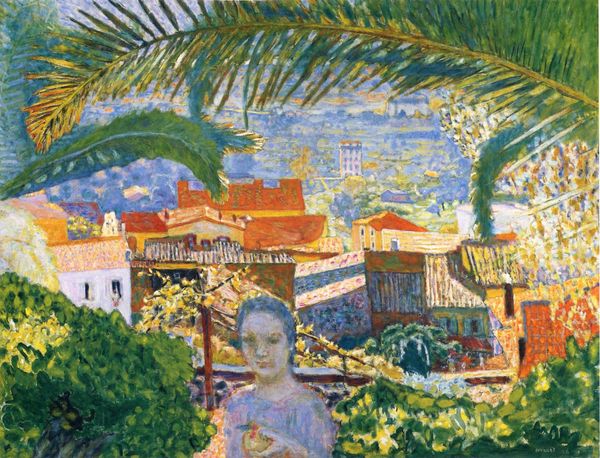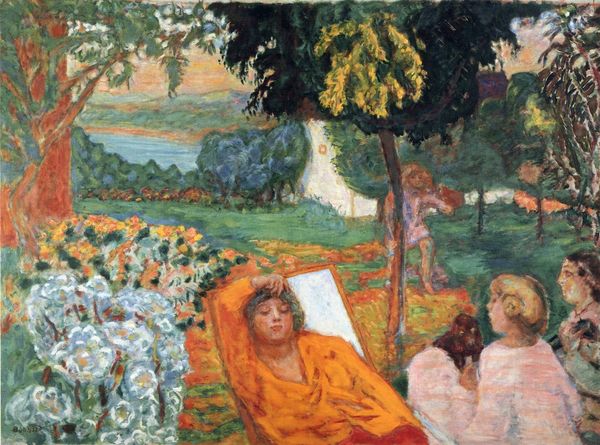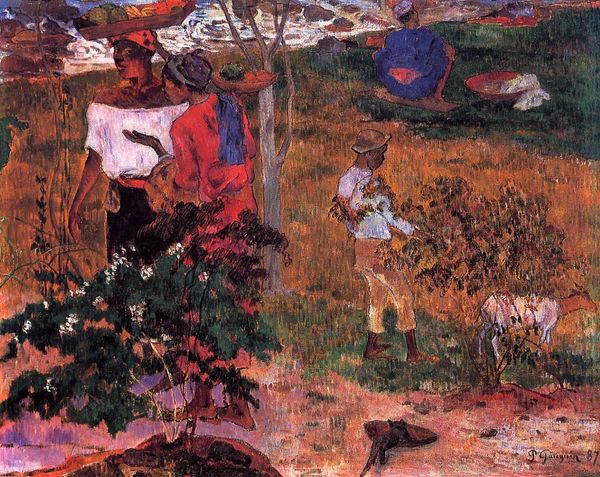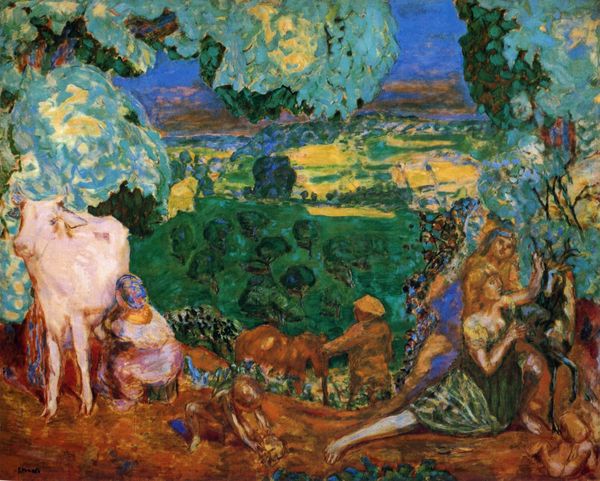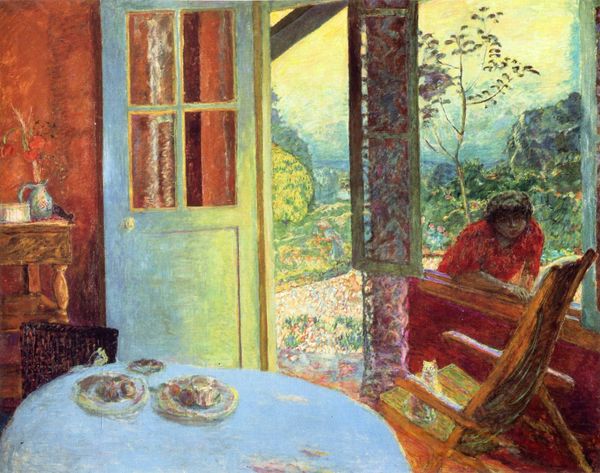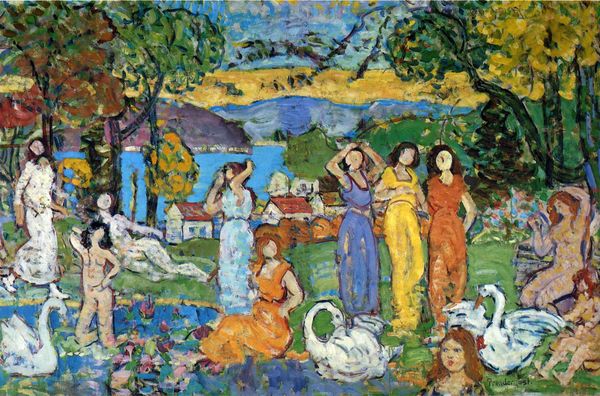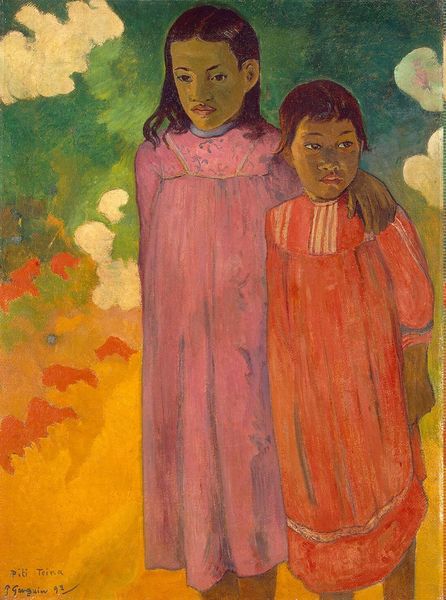
Dimensions: 104 x 122 cm
Copyright: Public domain
Editor: Here we have Pierre Bonnard’s “Girl with Parrot,” painted in 1910 using oil. The way he plays with colour really strikes me. It almost flattens the scene, creating this decorative effect, despite being set in what looks like a sun-drenched courtyard. How do you interpret the social context surrounding Bonnard's choice of subject here? Curator: That flatness you describe is key to understanding its context, as it pulls from Japonisme, which was quite fashionable at the time. But I see a layering of colonial dynamics at play. Wealthy Europeans often kept exotic pets, visually displaying access to faraway places, in this case, potentially alluding to the exploitation involved in acquiring these status symbols. Do you notice how the women don't engage with one another and the light seems to isolate the subjects? Editor: That’s fascinating, I hadn't considered the colonial aspect. So the seemingly cheerful scene may carry a critique of upper-class complacency? I did notice the way the parrot seemed like an uncanny mirror of the woman with it; maybe they both reflect ideas of beauty, possession, and otherness. Curator: Precisely! This artwork encapsulates social dynamics; this piece allows us to see beyond a simple portrait. Furthermore, by choosing these interior scenes over grand historical events or landscapes, he focused attention on domesticity's role within society, creating tension between intimacy and societal forces. Editor: So much to think about. It completely reframes my understanding of fin-de-siècle painting. Thanks for the insights. Curator: And thank you! It is a constant privilege to consider familiar works from evolving social, historical and theoretical viewpoints.
Comments
No comments
Be the first to comment and join the conversation on the ultimate creative platform.
